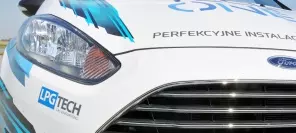- Main page
- Search
- Up to date
- Products
- Technology
- Vehicles
- Video
- Conversion Payback Simulator
Port Injection - Conversion Payback Simulator
Direct Injection - Conversion Payback Simulator
Diesel - Newsletter
Hyundai i30 CW LPGTECH - car in the back seat
- Home page
- Up to date
- Reportages, interviews, road tests
- Road tests
- Hyundai i30 CW LPGTECH - car in the back seat
« Powrót
 loading results...
loading results...During our tests we usually take a look at cars with factor-fitted or dedicated gas installations. But from time to time we receive a gas installation to test, with the car serving only as a background for the gas technology. This is one of such cases.
© gazeo.comKoreans already know how to produce good and interesting cars – competitors don’t laugh the i30 off, but speak of it with appreciationIt’s not the brand new Hyundai i30 CW (only 5600 km on the clock so far) that serves as the main point of our interest here, but the TECH gas system installed in this car, designed and manufactured by LPGTECH from Białystok, Poland. Why is the car of secondary importance here? Well, simply because we had access to it thanks to the gas system manufacturer, not the car manufacturer, and besides, the TECH 224 controller with the whole kit could as well be used in a totally different car.
Do przeczytania pozostało: 76% tekstu
Wybrane treści na gazeo.pl, tak jak ten artykuł, są dostępne dla zarejestrowanych Czytelników, którzy wykupili dostęp.
Gazeo.pl to sprawdzone informacje, porady, testy, relacje z targów i bogate kompendium wiedzy o LPG.
Planujesz montaż instalacji LPG? Poznaj dokładnie producentów, najnowsze rozwiązania techniczne i dostępne na rynku instalacje. Zobacz co warto zamontować.
Masz instalację? Lubisz wiedzieć? Bądź na bieżąco z nowościami, przepisami i poradami.
Gazeo.pl - konkretnie o autogazie!

anything about the conversion that we didn't
like? Answers are just a click away!
Left: 50%
You may also find these interesting:
 loading results...
loading results...






